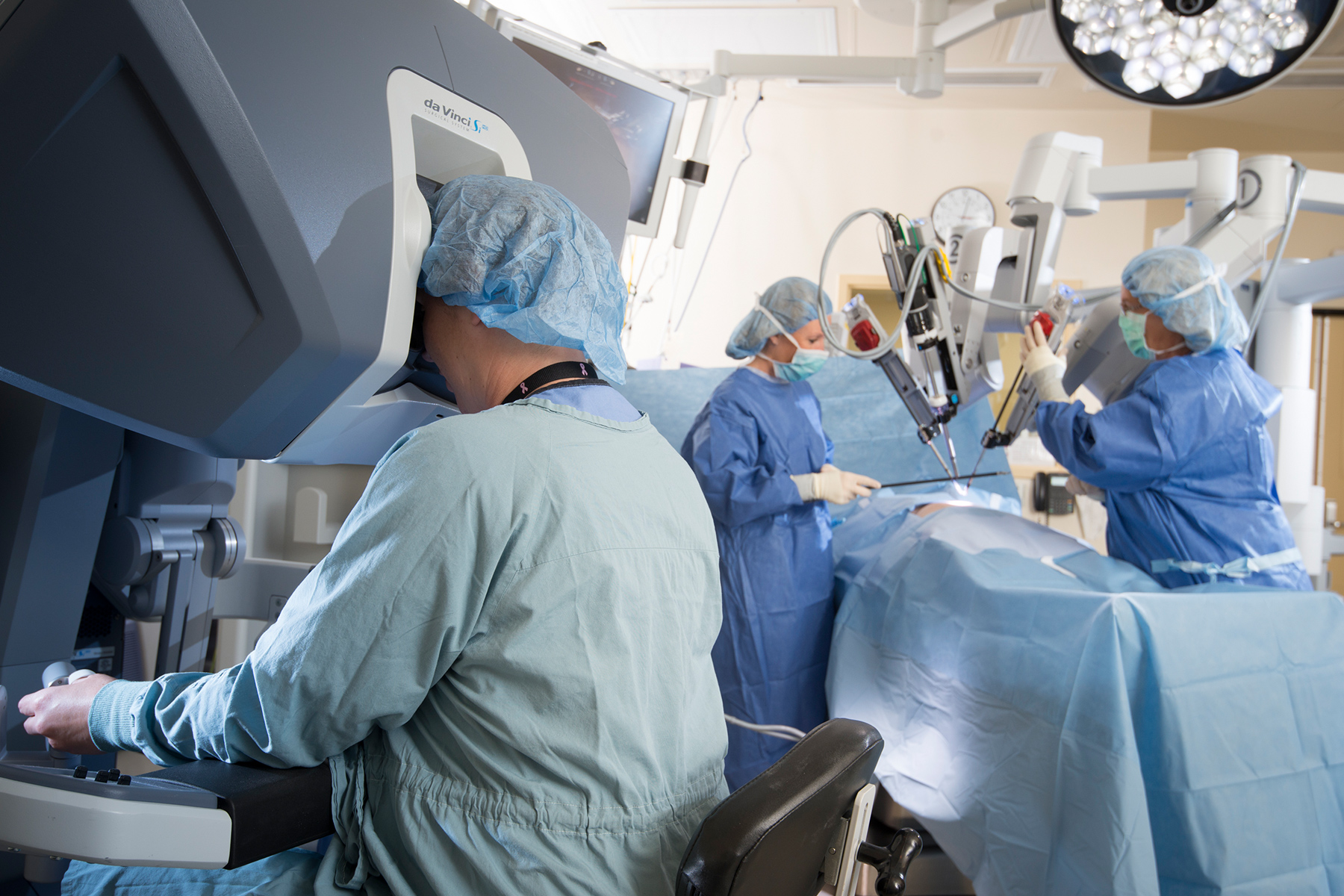robotic gynae oncology surgery
Robotic Surgery for Gynaec Oncology
Gynecologic cancers can be managed surgically by a minimally invasive approach for removal of all cancer tissue and organs using specialized robotic instruments in robotic surgery.
Early studies suggested short postoperative stay and lessened complications of surgery with a minimally invasive approach and fastened recovery. Robotic surgery is an effective alternative to conventional laparotomy for gynecologic malignancy. Minimally invasive surgery has been widely accepted and adopted for morbidly obese women as well as gynecologic malignancy, as laparotomy significantly adds to the morbidity for these patients.

How is robotic surgery different from laparoscopic surgery? In laparoscopy, the surgeon sees the operating field on a monitor placed closed to him which gives two-dimensional vision. The surgeon stands beside the patient and operates through mini-incisions through which the camera and instruments are placed. The most common restrictions in traditional laparoscopy are ergonomics related, which are handling of instruments and restricted two-dimensional field of vision which makes pelvic surgery, a narrow confined space difficult and challenging. With experience, a radical hysterectomy with lymphadenectomy may be done, conventional skills and non-familiarity with two-dimensional vision made gynecologists use laparoscopic surgery less commonly for oncology surgeries. Robotic surgery has minimized the limitations of laparoscopic surgery, with improved ergonomic design and three-dimensional vision, especially for those with less experience in laparoscopy. The surgeon performs robotic surgery controlling all the instruments and camera. The instruments have greater motion and flexibility and better three-dimensional high-definition vision.
Role of Robotic Surgery in Cervical Cancer.
Gynecologic oncologists are often posed with a dilemma if robotic surgery can replace conventional open surgery in all cancer patients. As seen in studies robotic surgery can provide adequate resection and surgery in terms of pathologic parameters like tumor grade, size, deep cervical invasion, lymphovascular invasion, lymph nodal involvement and margins. There are studies that also suggest there is a negative role of robotic surgery in cervical cancer. Therefore cases have to be suggested which fit in best for robotic surgery while exercising due caution.
Role of Robotic Surgery in Endometrial Cancer.
Robotic surgery has been now established as the gold standard for the management of endometrial cancer by surgery. The advantages of robotic surgery have been widely recognized for endometrial cancer. Studies have shown that surgeries can be performed easily, with safety parameters in terms of adequacy of tissue for the staging of cancer and decreased hospital stay with quick recovery and return to work. The robotic surgery has been advantageous in terms of lymph node retrieval for pelvic and para-aortic nodes without complications. It has also been shown to be advantageous in old and obese patients.
ARE LOOKING FOR ROBOTIC GYNAE ONCOLOGY SURGERY IN HYDERABAD? BOOK YOUR SLOT NOW WITH OUR EXPERT SURGEON
Role of Robotic Surgery in Ovarian Cancer.
The role of surgery in ovarian cancer with epithelial cancers is to provide cytoreduction with less than one centimeter of residual tissue. For three decades, there are numerous attempts for cytoreduction in ovarian cancer by a minimally invasive approach. Does robotic surgery improve cytoreduction for ovarian cancer? The disadvantage of robotic surgery is that there is a limitation to simultaneously perform surgery in two operative fields of abdomen and pelvis. Early ovarian cancers can be adequately managed by robotic surgery. Generally, robotic surgery is not recommended for ovarian cancer.
Robotic surgery is a minimally invasive approach for gynecologic cancer. Through tiny incisions, robotic instruments are used and a high definition camera is placed into the patient’s abdomen. Major surgeries can be performed via small incisions with fewer complications like bleeding, pain, infection and much earlier recovery compared to open surgery.